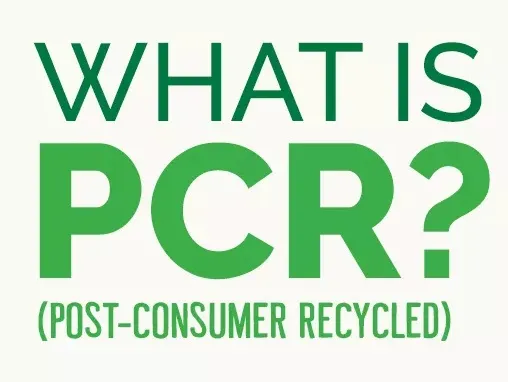- Afrikaans
- Albanian
- Amharic
- Arabic
- Armenian
- Azerbaijani
- Basque
- Belarusian
- Bengali
- Bosnian
- Bulgarian
- Catalan
- Cebuano
- chinese_simplified
- chinese_traditional
- Corsican
- Croatian
- Czech
- Danish
- Dutch
- English
- Esperanto
- Estonian
- Finnish
- French
- Frisian
- Galician
- Georgian
- German
- Greek
- Gujarati
- haitian_creole
- hausa
- hawaiian
- Hebrew
- Hindi
- Miao
- Hungarian
- Icelandic
- igbo
- Indonesian
- irish
- Italian
- Japanese
- Javanese
- Kannada
- kazakh
- Khmer
- Rwandese
- Korean
- Kurdish
- Kyrgyz
- Lao
- Latin
- Latvian
- Lithuanian
- Luxembourgish
- Macedonian
- Malgashi
- Malay
- Malayalam
- Maltese
- Maori
- Marathi
- Mongolian
- Myanmar
- Nepali
- Norwegian
- Norwegian
- Occitan
- Pashto
- Persian
- Polish
- Portuguese
- Punjabi
- Romanian
- Russian
- Samoan
- scottish-gaelic
- Serbian
- Sesotho
- Shona
- Sindhi
- Sinhala
- Slovak
- Slovenian
- Somali
- Spanish
- Sundanese
- Swahili
- Swedish
- Tagalog
- Tajik
- Tamil
- Tatar
- Telugu
- Thai
- Turkish
- Turkmen
- Ukrainian
- Urdu
- Uighur
- Uzbek
- Vietnamese
- Welsh
- Bantu
- Yiddish
- Yoruba
- Zulu
Exploring the Rise of Alcohol Pouches and Their Popularity Among Consumers
The Rise of Liquor Pouches A New Trend in Beverage Packaging
In recent years, the beverage industry has been witnessing a remarkable transformation, particularly with the emergence of liquor pouches as a novel packaging solution. Traditionally, alcoholic beverages have been packaged in glass bottles, cans, or kegs, but liquor pouches are gaining popularity for a multitude of reasons. This article delves into the reasons behind this trend, the benefits of liquor pouches, and what it means for consumers and the industry alike.
The Appeal of Convenience
One of the key factors driving the growth of liquor pouches is the convenience they offer. Pouches are lightweight and easy to transport, making them an ideal choice for outdoor events, parties, and picnics. Unlike glass bottles that can be heavy and prone to breakage, liquor pouches are not only easier to carry but are also more durable. This makes them a practical option for consumers who are looking for portability without compromising on quality.
Eco-Friendly Packaging
As environmental concerns continue to rise, consumers are seeking more sustainable options in their purchases. Liquor pouches are often made from recyclable materials and use less plastic than traditional bottles. Many companies are leaning towards eco-friendly alternatives, and pouches can be produced with a lower carbon footprint compared to glass production. This aligns with the increasing awareness of sustainability and encourages consumers to make responsible choices, capping the trend of “green” purchasing.
Variety and Versatility
Liquor pouches also offer brands a versatile platform to showcase their products. From cocktails and spirits to ready-to-drink beverages, pouches come in various sizes and designs to accommodate different types of alcohol. This means that consumers can enjoy a diverse range of flavors and brands without the commitment of purchasing an entire bottle. Moreover, pouches can also be creatively designed to attract attention and stand out on store shelves, further enhancing their appeal.
liquor pouches

Cost-Effectiveness
For producers, liquor pouches represent a cost-effective solution regarding manufacturing and shipping. The production of pouches typically requires less material than bottles, which reduces packaging costs. Additionally, their lightweight nature can lower shipping expenses and contribute to overall savings for both businesses and consumers. These savings can translate into more competitive pricing for consumers, making liquor pouches an attractive option for budget-conscious shoppers.
Cocktail Culture and Ready-to-Drink Trend
The rise of cocktail culture has also played a significant role in the popularity of liquor pouches. With the increasing interest in mixology and craft beverages, ready-to-drink (RTD) cocktails packaged in pouches have found their niche in the market. These products offer consumers the ability to enjoy high-quality cocktails without the need for complex preparation. Whether it’s a margarita, mojito, or a refreshing sangria, liquor pouches make it easier than ever to enjoy bar-quality drinks at home or on the go.
Challenges and Considerations
Despite their rising popularity, liquor pouches face several challenges within the industry. Regulatory concerns are paramount; governments across the world have different regulations regarding the sale and distribution of alcoholic beverages. Ensuring compliance while innovating in packaging can be a delicate balance. Additionally, some consumers may still exhibit a preference for traditional bottles, viewing them as more premium or high-quality packaging. Changing these perceptions will be crucial for the wider acceptance of liquor pouches.
Conclusion A Bright Future for Liquor Pouches
As more consumers embrace convenience, sustainability, and innovation, it is clear that liquor pouches are likely here to stay. They represent a convergence of modern-day demands for practicality while still catering to the tastes of a diverse audience. Brands that choose to invest in this format might find themselves better positioned to appeal to a broader demographic eager for new experiences in the beverage landscape. Ultimately, liquor pouches reflect a dynamic shift in how consumers engage with alcoholic beverages, paving the way for exciting developments in the industry for years to come. As we look ahead, the role of packaging in enhancing the consumer experience will continue to evolve, fostering a more adaptable and responsive beverage market.













